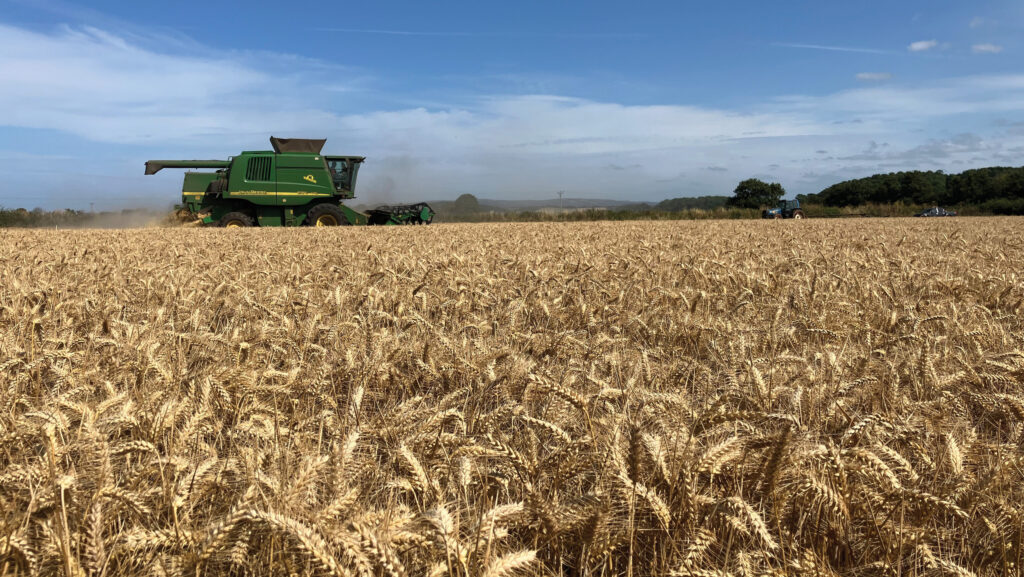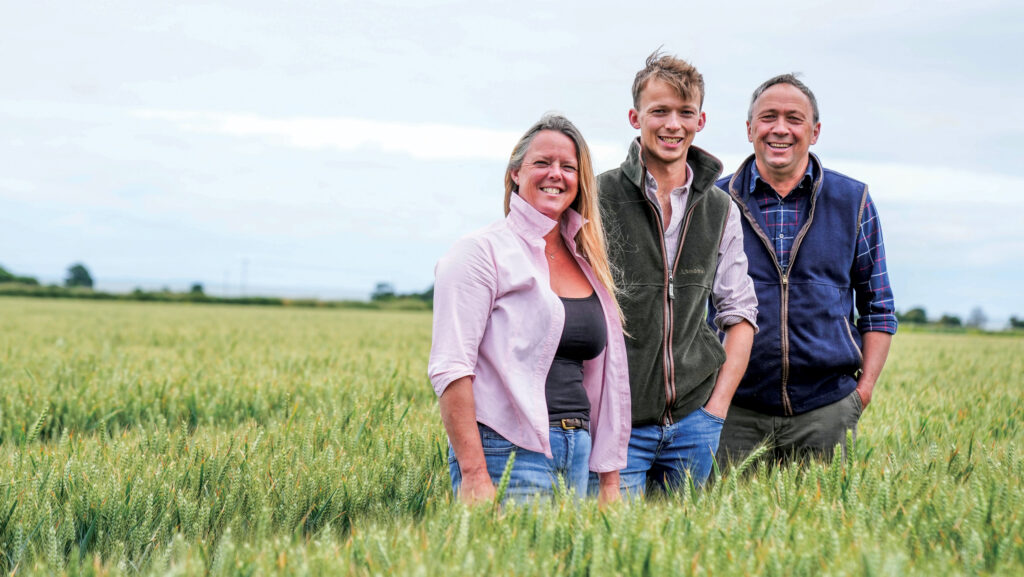Harvest 24: Late drilling and grazing yields 10t/ha winter wheat
 © MAG/Emma Gillbard
© MAG/Emma Gillbard Harvest of a late-drilled crop of winter wheat that was strategically grazed by sheep is off to a promising start at Briddicott Farm on the edge of Exmoor.
With yields above 10t/ha and specific weights of 81-82kg/hl, mixed farmer Andrew Speed, who farms with wife Tracey and son Robert, is pleased with how the crop of Skyfall is cutting.
“We’re harvesting at about 15% moisture and we’ve got a lovely crop of straw, which is worth an awful lot of money in this part of the world,” says Andrew.
See also: AHDB looks to levy payers to submit arable research ideas
Watch the video below to hear from Andrew and Tracey about their wheat harvest this year.
Why late drilling?
The block of winter wheat was ploughed and combi-drilled during the first week of November, following a crop of oilseed rape, with zero applications of glyphosate and slug pellets used to establish the crop.
Rather than using chemical inputs to remove the oilseed rape volunteers, they were allowed to regenerate before being grazed off by a batch of fattening lambs in late autumn.
Andrew says: “We aim to get all the winter cereals drilled-up at the top half of the farm by 1 October, as its colder and crops struggle to establish otherwise.

Tracey, Robert and Andrew Speed © Emily Fleur
“We then come down to the flat after the volunteers have been grazed for the later drilling window, which helps spread workload.”
Sheep are very much integrated into the arable enterprise, acting as an excellent tool for weed and disease control.
This not only eliminates chemical use, but provides additional sheep fodder and improves overall land output.
“Our cropping and livestock enterprises all work to benefit each other. Grazing the volunteer oilseed rape produced some excellent lambs,” says Andrew.
The farm produces beef, sheep and arable across 1,000ha of tenanted land ranging from sea level up to moorland at 1,200ft.
This block of land actually had two sheep grazing sessions during the same winter, as the late-drilled Skyfall winter wheat was grazed in February.
A group of 600 ewes with lambs were turned out to the wheat, grazing 4ha in about four days.
This removed the need for a T0 fungicide spray, as latent disease on the leaves was grazed, prompting fresh new biomass to emerge.
Andrew has grazed arable crops on the farm for a number of years, and sees it as an effective method to optimise yield potential, improve tiller numbers and promote crop uniformity.
First ever T4 spray
However, despite the effective early season disease control, Andrew had to use his first-ever T4 fungicide spray this season as a late influx of septoria posed a risk to crops.
“The extra fungicide cost us about £20-25/ha on top of our standard use, but it was certainly worth it. We are going for milling quality, so we’ve got to keep the crop clean,” he says.
Weed management is also a key focus. The family have a proactive approach to keeping blackgrass off the farm, which is why all machinery work is done in house to keep weed seed contamination to an absolute minimum.
All straw is baled with the farm’s Claas square baler, with barley straw kept on farm and wheat straw sold to neighbours.
Varying soils and topography
The Speed family grow just over 200ha of winter wheat and are now about a quarter through its harvest. Most of the farm’s arable land is steep, challenging and in small fields, with an average field size of less than 4ha.
The first block of wheat to reach the combine was down at sea level, only 200m from the coast.
“It’s very sandy soil about 10-12in deep, with pebbles underneath,” says Andrew. “This makes it very drought prone, but this year hasn’t been a problem. The wheat is coming off nicely and we’re pleased.”
However, this has not been the case for oilseed rape, which Andrew reports to have had disappointing yields.
“Meanwhile, winter barley got off to a disappointing start but as we began harvesting some of our higher ground at 850ft, we achieved some quite promising yields,” he says.
Last on the harvest to-do list will be 15ha of spring beans, which are looking promising.

